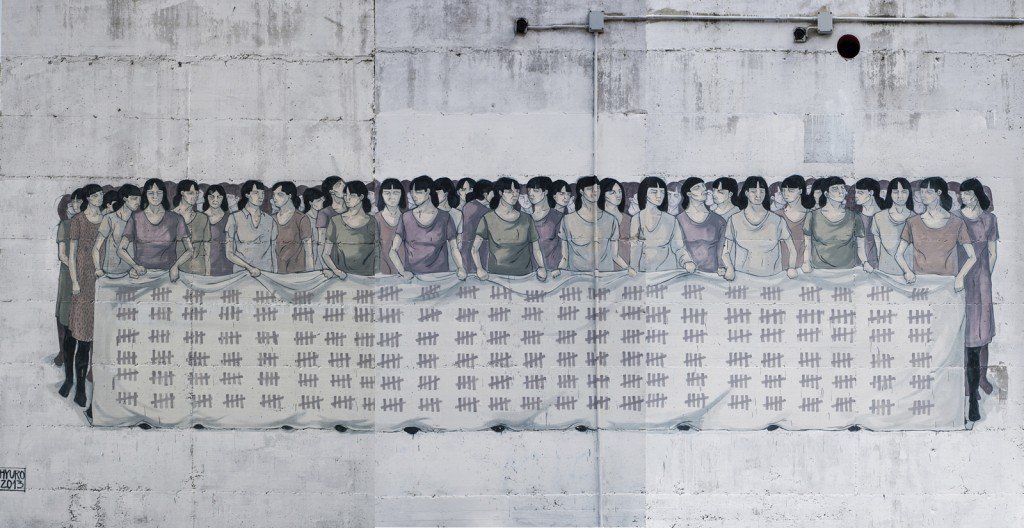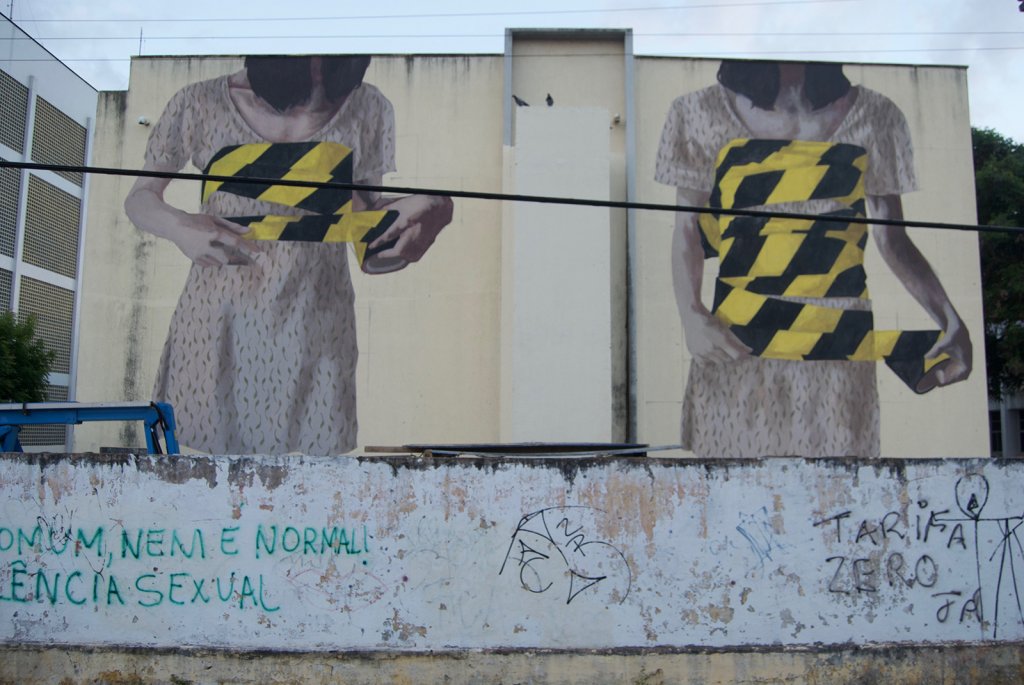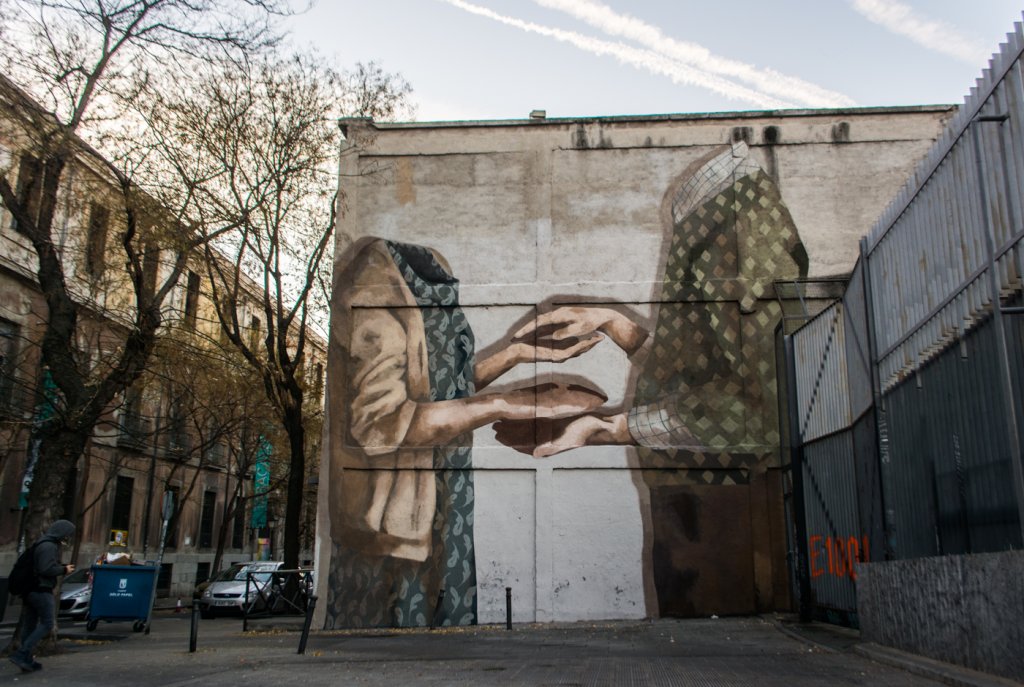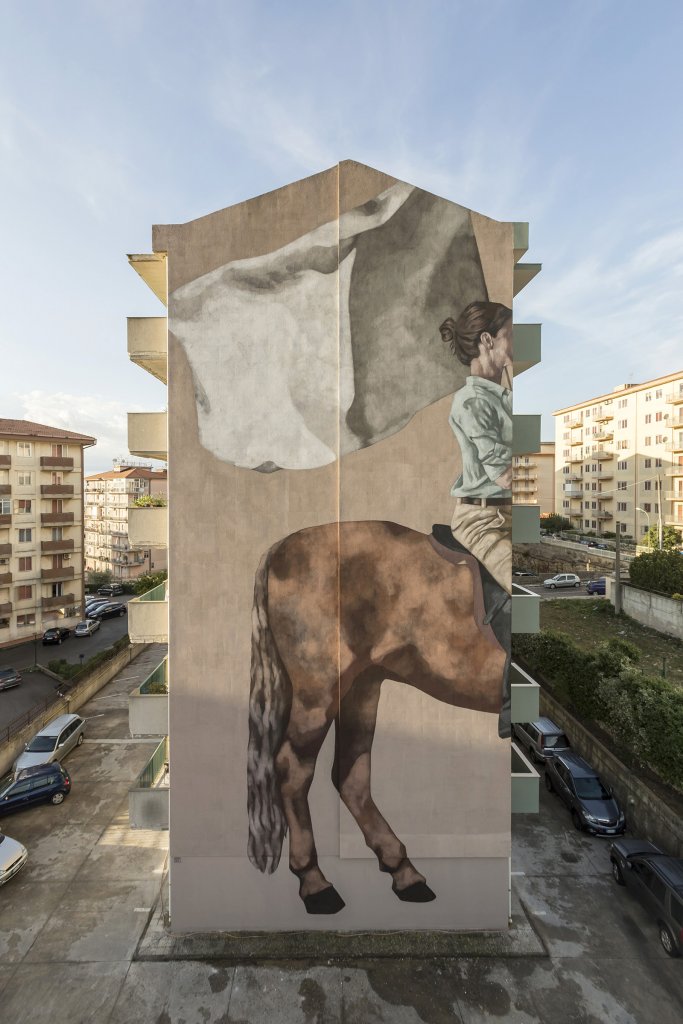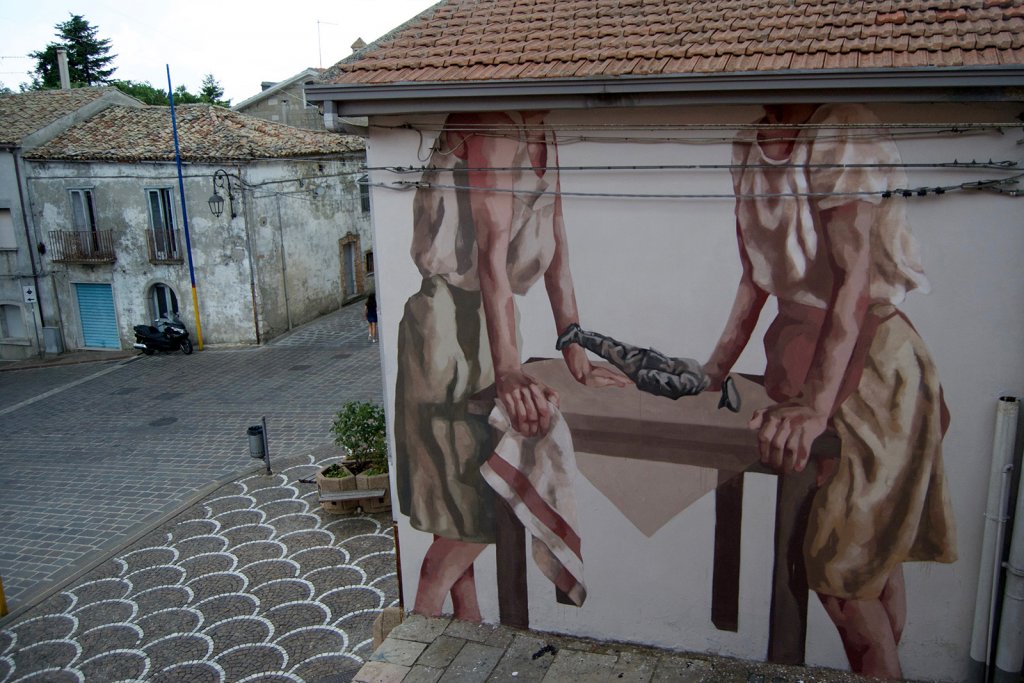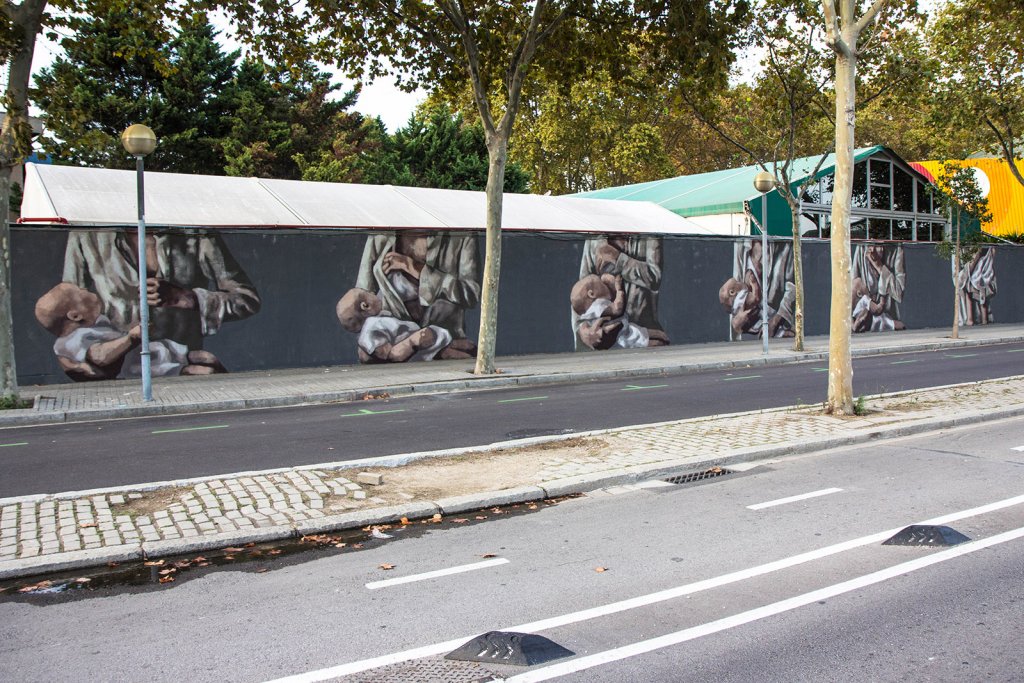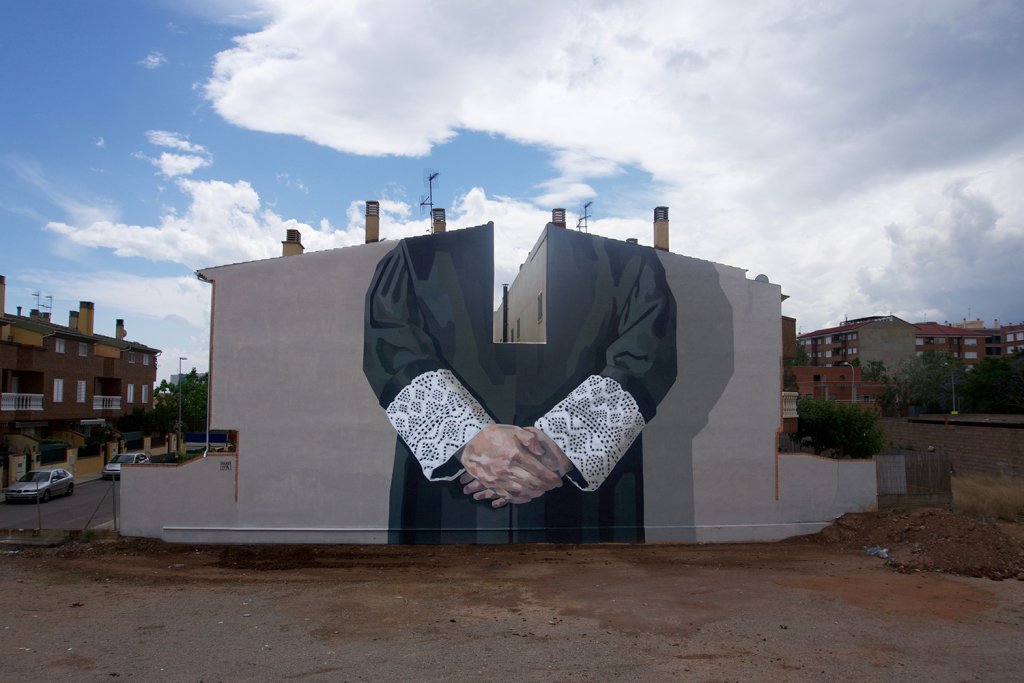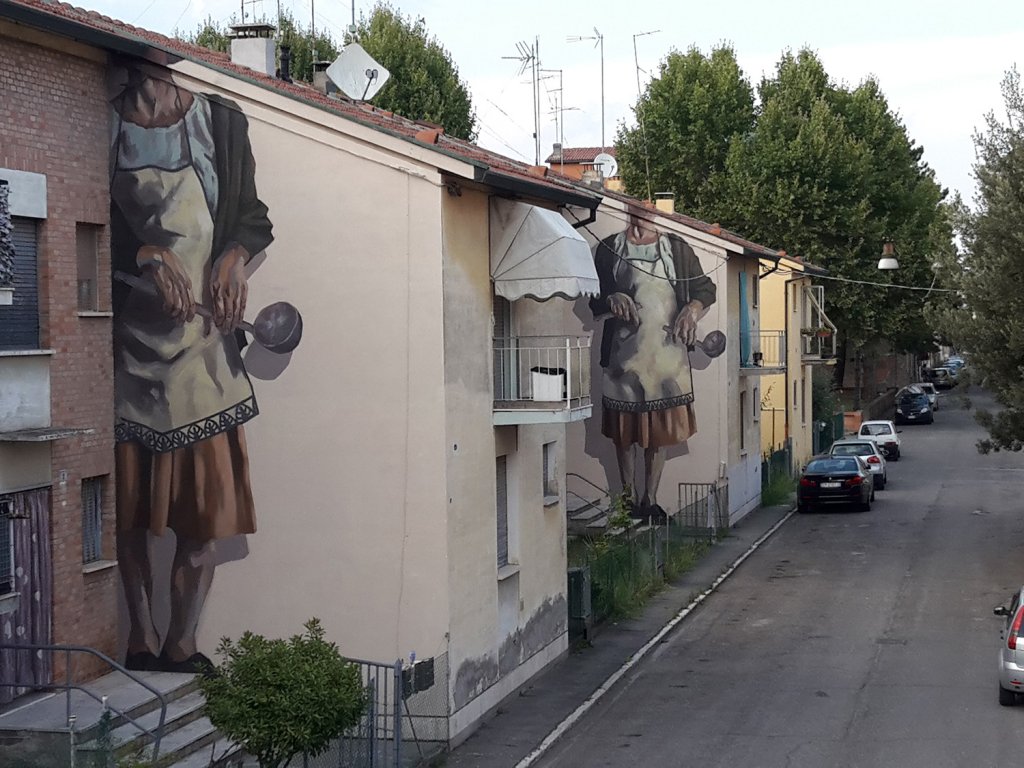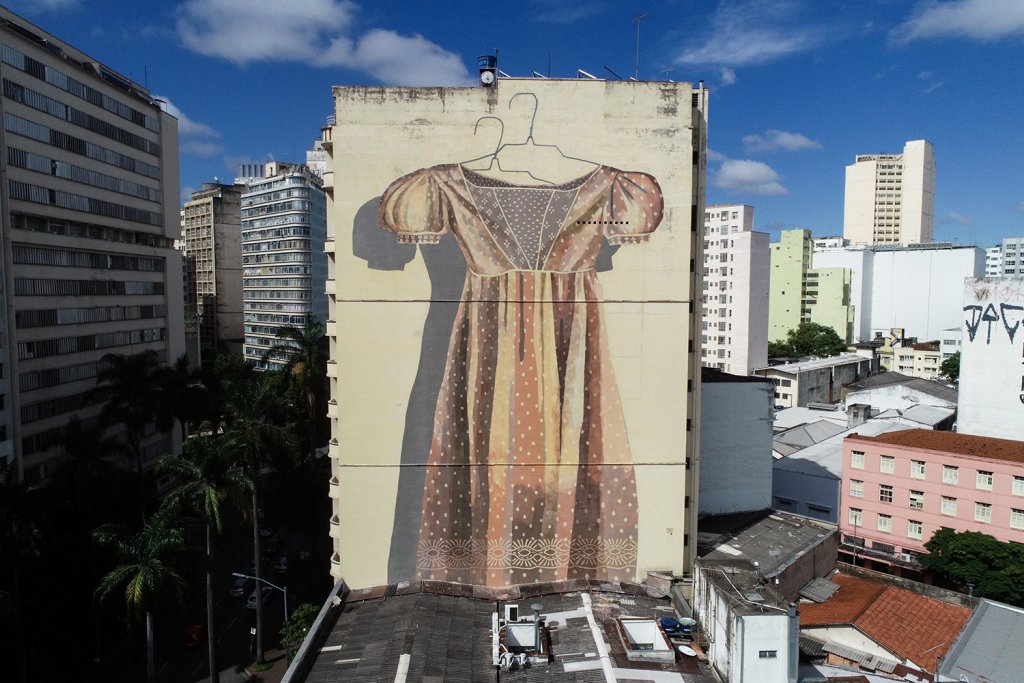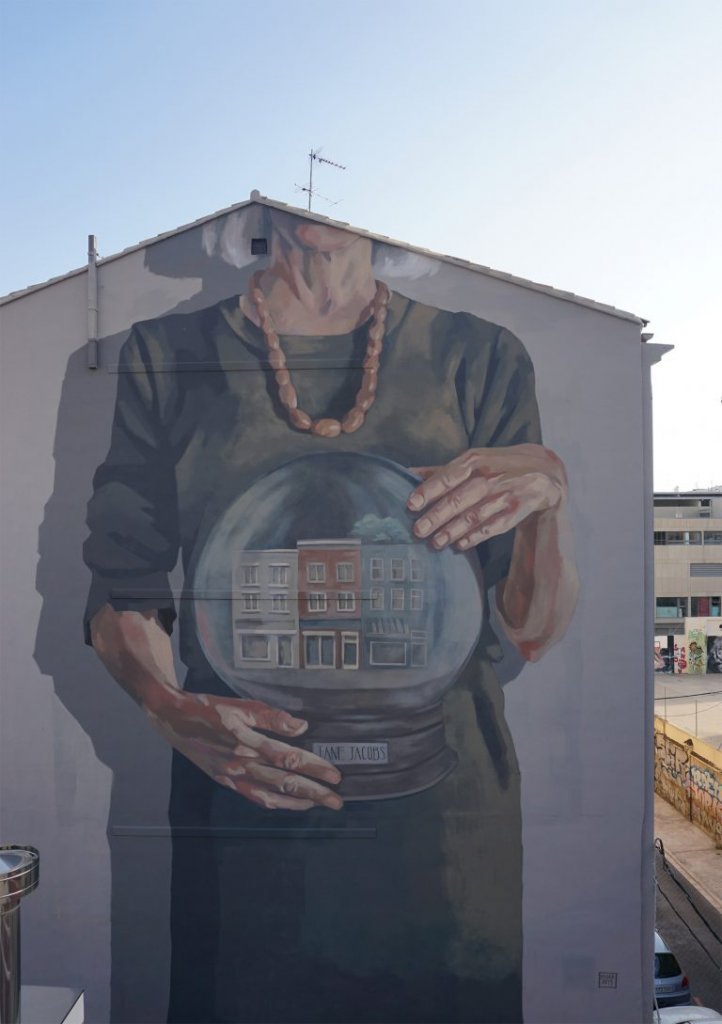Every year on the eighth of March, International Women’s Day (IWD) pays tribute to women’s indomitable spirit across the globe. It celebrates the social, economic, cultural and political achievements of women. This year we pay tribute to female artist Tamara Djurovic, who painted all over the world with her monumental murals under the name Hyuro. Tamara sadly passed away at her home in Valencia last November from a rare form of leukaemia.
Hyuro painted herself a significant role within the international mural art scene that is mostly male-dominated. Known for her poetic feminism and large-scale art murals, she empowered women. She touched on social justice and political issues delicately and artistically in her wonderful subdued and earthy palette. Hyuro extensively travelled worldwide with her impactful murals, painting across Europe, Argentina, Brazil, Mexico, the United States, Morocco and Tunisia, with most of her murals concentrated in Valencia. Originally from Argentina, it wasn’t until Tamara travelled to Spain around 2010 to complete her master’s degree that she became actively involved within the scene after she met with fellow artist and close friend Escif.
Today on International Women’s Day, we share and celebrate Hyuros legacy and take a look at some of her most powerful murals that empower WOMEN.
“The idea of “woman” plays an important role in my work, not only from her gender status, but also from her human condition, it’s the role that I know best and from which I can speak most honestly. ” Hyuro Street Art News interview 2015
The mural “FRAME” was painted in 2013 to symbolise the International Day for the Elimination of Violence Against Women.
The mural FRAME captures the work by the street artist Hyuro realised in 2013. Photo credit Flavia Fiengo
¨Public / Private” mural in Brazil 2015 addresses the role criminalization of abortion plays in women’s premature death rate. Abortion is forbidden in five countries in the world; four of them are in Latin America. Abortion is illegal in Brazil and is the fourth cause of death for women. It is estimated that a Brazilian woman dies every two days victim of illegal abortion.
This wall questions the use of the female body as a usurped territory by the state and its laws interference on a private matter that should be accepted as such and not penalized, turning it into a political debate subject in which women lose all rights and vote on their own body. It talks about the lack of respect for women who are considered irresponsible and incapable of making decisions based on their own moral values according to their specific circumstances.
…
¨Public / Private¨- Fortaleza, Brazil 2015- Federal University of Ceara- Humanities Center- Concrete Festival.
¨Reciprocity¨ (Reciprocity) mural in Madrid, Spain 2015 was for Madrid Street Art Project- Urban art and gender equality project.
¨This wall speaks about gender equality, considering the concept of gender from a wider and more plural place. It downplays the biological condition of the individual, respecting the choice that each person makes about their condition as man, woman or a non-binary gender. It speaks of subverting the manichean logic that always favors one part over t he other one, trying to speak from inside and outside the system and not only investing the traditional asymmetry to continue speaking from the same system that is criticized.¨
…
Photo credit Guillermo de la Madrid from Madrid Street Art Project
¨Una donna libera¨ mural in Ragusa, Sicily 2016 for Festiwall pays tribute to Maria Ochipinti ( 1921-1996 ), militant pacifist, anarchist, feminist. This wall speaks of her passion, her freedom and greatness, but it also represents the incomprehension, abuse and marginalization she had to live with all her life.
¨Una donna libera¨ Ragusa, Sicily 2016 for Festiwall
The mural in Monteleone di Puglia, Italy 2016 for Willoke Festival is located in the Piazza Municipio of Monteleone di Puglia city in Italy. It recognises the first popular uprising against the fascist regime. Hundreds of women took to shout in protest against food restrictions. The fascist authorities arrested women, children and the elderly; many detainees remained in prison for fourteen months. This wall speaks about women’s role during war periods, about their caring for households, families, and lands, a task primarily silenced throughout history.
Moteleone di Puglia, Italy 2016 for Willoke Festival
¨Temporary transit¨mural in Barcelona, Spain 2016 for Transit Walls project curated by Rebobinart addresses the natural right of women breastfeeding in public and that it should not be sexualised or frowned upon when a woman breastfeeds her child.
¨Temporary transit¨Barcelona, Spain 2016 for Transit Walls project curated by Rebobinart
¨Patriarcado¨ mural in Vila-Real, Spain 2018. In Spain, a sentence was issued regarding a trial for gang-rape of five young men to an 18-year-old girl. The ruling declares them guilty of sexual abuse. According to the judges, there was no rape since they did not perceive violence or intimidation, so they refuse to condemn them for sexual assault and opt for the slightest criminal type of sexual abuse. The five young men’s lame sentencing saw a historic feminist strike to say enough to violence, inequality, and discrimination suffered by women.
¨Patriarcado¨ Vila-Real, Spain 2018
The ¨L’Árzdora¨mural in Cotignola, Italy 2018 describes the structure and composition of a family in Cotignola during the Eighteenth Century. Women were almost treated as minors, and wives were always under marital authority. The young bride’s entry into the new family was accompanied by the mother-in-law’s ritual, who welcomed the daughter-in-law “on the stairs with a big spoon”, offered as the assignment of domestic chores. Any woman who wanted to compete with men in Romagna was named “Árzdora”: a woman who wants to go beyond assigned functions in a patriarchal society and show her skills by competing with her husband.
¨O que fica¨( What Remains ) mural in Belo Horizonte, Brasil 2018 speaks about abortion and the deaths due to clandestine abortions and poorly done procedures. Poorer women represent a disproportionately high percentage of those who die, fall ill or face criminal charges when trying to interrupt a pregnancy. In Brazil, lawmakers introduced measures to ban abortion altogether. Few policies advocate legalization or decriminalization. Those activists who do so frequently are threatened or socially repudiated.
The image represents what remains, the emptiness in the face of the loss of every woman who has been confronted with the need of provoking a clandestine abortion. The hanger on which the dress hangs symbolizes a daily stinging element, as it can be a knitting needle, instruments with which domestic abortions continue to be carried out. The dress has no end, it continues below the building and it will keep going until this law does not change.
…
¨O que fica¨( What Remains ) mural in Belo Horizonte, Brasil 2018
¨Jane Jacobs¨mural in Valencia, Spain 2019 was dedicated to the American urban planner Jane Jacobs, which led to a new way of thinking about cities with a gender perspective, carried out within the project “Interactive Murals Women of Science” of the Polytechnic University of Valencia (UPV) and Las Naves in 2019.
¨Jane Jacobs¨mural in Valencia, Spain 2019
Hyuro was a hugely talented, inspirational artist. Her passing has hit the art world hard. Hyuro leaves a legacy as one of the most powerful female street artists of her generation who amplified the voice of many through her artistic expression. Her murals speak up for the voiceless, empower the powerless, addresses inequality and discrimination.
Photo credit /source Hyuro website
